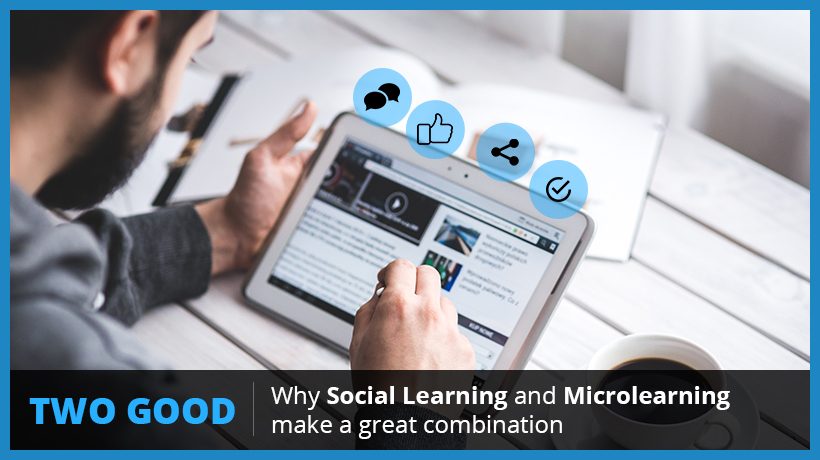
If you are looking for ways to create engaging learning experiences that motivate learners to come back for more, learning portals for employee training are a must-have. In this article, I share 7 tips to create learning portals that actually work.
How To Create Effective Learning Portals For Employee Training
L&D teams continuously seek approaches that will help learners acquire learning, apply the acquired learning effectively on the job, and perform better. They want to adopt approaches that create engaging and sticky learning experiences, and motivate learners to come back for more.
Learning portals for employee training are among the approaches that can be used to achieve these mandates. In this article, I outline how you can use my tips to create learning portals for highly effective employee training.
What Are Learning Portals, And What Are Their Key Characteristics?
Learning portals are online learning repositories or gateways that offer varied resources to the learners (through recommended learning paths).
- They offer a variety of learning resources that could include bite-sized online courses, material to support Instructor-Led Training (ILT), and learning or job aids.
- They are normally designed for a multi-device support, enabling learners to access their learning journey on the go and across devices (spanning across desktops/laptops to tablets/smartphones).
- They support social or collaborative learning.
However, learning portals are not merely a knowledge repository. In contrast to a similar offering over an intranet or on an LMS, here is a summary of their key characteristics that highlight the value that learning portals offer for employee training:
- They are learner-centric.
- They use a combination of immersive and sticky learning approaches like microlearning, gamification, and video-based learning.
- They also feature narratives/themes to create the learning path or learning journey.
- They feature recommended learning paths (that are often personalized).
- They are designed to achieve a specific learning focus.
- They work on the premise of the “pull” of learning resources by learners rather than the “push” associated with an LMS.
- They encourage exploration and contribution by learners.
- They offer a platform for social or collaborative learning.
So, in contrast to traditional training delivery through an LMS, the key gains offered by learning portals for employee training are:
- A higher degree of employee engagement.
- Higher completion rates.
- Increased application of the acquired knowledge.
This is not all!
In fact, learning portals for employee training can be used as a vital trigger in changing the learning culture and helping learners move up from “discrete, formal training” to”learning as a continuum”.
How Can Learning Portals Be Used For Employee Training?
The flexibility of learning portals is that they can be used to address all kinds of employee training and key initiatives like:
- Formal training (online or blended).
- Performance Support (on-the-job learning aids).
- Social learning.
- Support a key initiative (for example, a specific change management initiative).
To illustrate the possibilities, here is a list of learning portals for employee training we, at EI, have crafted:
- Induction and onboarding.
- Employee engagement.
- Sales and Marketing Resource Center.
- Best practices (Project Management).
- Best practices (Corporate Quality mandate).
- Innovation (creating a culture of innovation in an organization).
- Change management (for HCM).
- Content curation.
To see the impact that you can create with learning portals, take a look at this video which features “Tips and Examples on How Can You Use Learning Portals for Employee Engagement”:
Tips And Best Practices That Can Help You Create Learning Portals For Employee Training That Actually Work
Here is my list of 7 tips that can help you offer learning portals for employee training that will work:
- Offer multi-device support
As we know, this is the “new normal”. The learning assets must be designed to provide multi-device support. Learners want the flexibility to learn on the go and on the device of their choice. - Offer learning assets in diverse formats
Learning portals can offer both formal and informal training. What is important is that the learning assets should be designed in multiple formats so that they can be used by learners to explore/learn more or at their moment of need. These could include learning assets to:
a. View
b. Read
c. Learn (interactively)
d. Test
e. Practice
f. Apply - Provide personalization and personalized learning paths
Learners do not want to invest time in a generic course, but they want a personalized learning experience that aligns with their needs. Learning portals for employee training must be designed to offer personalized learning. The content can be personalized depending on the learner roles/profiles or through a pre-assessment. Or, the control can be with the learner, wherein they can configure their own learning path. - Provide room for exploration and discovery
As adult learners, we do not want learning to be too prescriptive. While learning portals for employee training are designed to offer recommended learning paths, learners must be given adequate room to explore, discover, and pick what makes more sense to them. - Create a forum for competition, as well as for rewards and recognition
Learning portals must be designed to offer healthy competition, as well as room for rewards and social recognition. - Create communities of learning and practice
While learning portals for employee training are designed to enable a self-directed learning, they must provide avenues for active interactions with others. - Offer avenues to contribute
Learning portals must provide an option for ongoing contributions by learners. This will keep learner engagement high and enable organizations to keep enhancing their content.
I hope this article provides the required pointers which will help you design high-impact learning portals for employee training that not only engage learners but also motivate them to continue learning actively.
If you have any queries or need any specific support, do contact me at apandey@eidesign.net.
Read More:



